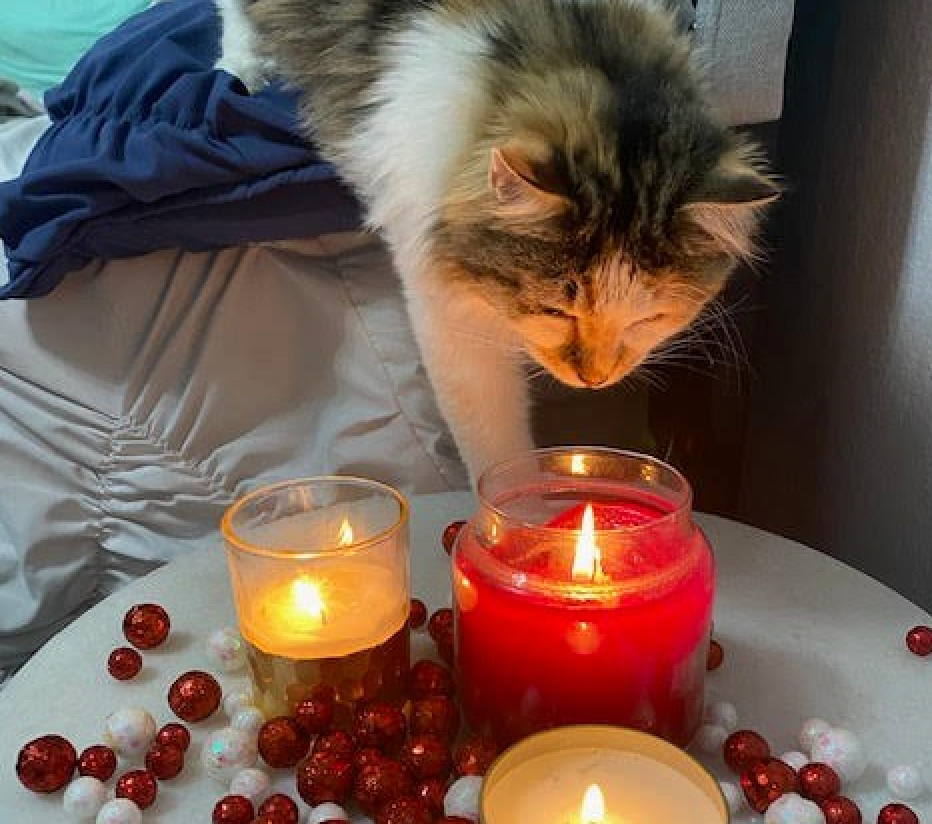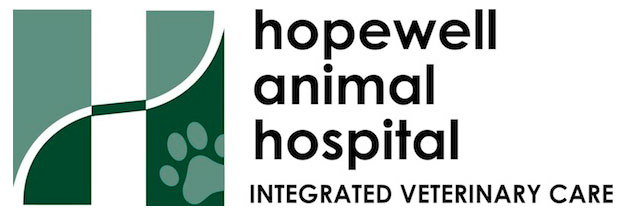
Holidays like Valentine’s Day are the time to celebrate love and engage in romantic gestures—but shouldn’t include a visit to the veterinary hospital! In this post we outline some pet dangers to bear in mind during the holidays, especially February 14th!

Dorothea, a cat from Minnesota, is intrigued by a romantic item pet parents may have around the home this Valentine’s Day (Photo courtesy of Pet Poison Helpline).
Massage oil
In an organizational release,1 senior veterinary toxicologist at Pet Poison Helpline, Renee Schmid, DVM, DABT, DABVT, At Pet Poison Helpline, recounted that just after Valentine’s Day last year they received a call from the owner of a Great Dane who had ingested lavender massage oil. Luckily, the dog did not ingest enough to result in systemic toxicity, though it did cause gastrointestinal irritation and posed a risk for aspiration. “Flavored massage oils can be particularly dangerous depending on their contents. They can also be more enticing to an animal because of the scent,” she explained.
Candles
Candles can pose various dangers to pets including burns from flames or hot wax, pets knocking them over and starting a fire, or toxicity. “Candle wax can pose a risk for dermal and gastrointestinal irritation with potential for ulcerative lesions,” said Schmid.
She highlighted a story from last February in which Pet Poison Helpline received a call surrounding a kitten named Chilli who spilled hot candle wax on his fur and then ingested the wax. The cat vomited and had what the owner described as convulsions. Chilli was making noise after this incident and was found rolling on the floor. “On physical exam at the pet hospital, no neurological deficits were noted. It is possible that the signs described by the animal’s owner as convulsions may have been related to discomfort from the presence of wax rather than a seizure-like activity,” Schmid said.
Flowers
Flowers are probably the most traditional Valentine’s Day gift, though some can be dangerous for pets, especially for cats. For example, some lilies, including those in the genus Lilium and daylilies (Hemerocallis) cause renal toxicity and can lead to kidney failure in cats.2
Schmid shared a resource, in the release, “To help educate cat lovers about the dangers of lilies, we developed the educational campaign and website NoLiliesForKitties.com to provide cat owners a one-stop resource about this deadly threat. The site is now listed as a trusted resource for lily poisoning information on the official FDA website.”3
Chocolate
It’s universally known that chocolate is toxic to cats and dogs. However, according to the release, it’s important to also keep in mind that along with candies and treats, other romantic gifts like massage oil and candles can also contain chocolate.

“Chocolate remains the number one concern when it comes to Valentine’s Day celebrations,” stated Schmid. “The severity of chocolate poisoning varies greatly depending on the type and amount of chocolate ingested and the size of the pet. The darker and less sweet the chocolate, the more toxic it can be to dogs. Ingestion of the wrappers or packaging can also be a concern as they can sometimes cause an obstruction in the stomach or intestines. Also be aware that some chocolate-containing products may include other toxins such as macadamia nuts, raisins, coffee or espresso beans, or xylitol.”
Schmid concluded by sharing that pet owners should remove possibly toxic or dangerous itesm from nightstands, counters, or other surfaces where pets have access. “You might not think it looks appetizing, but our experience shows it will intrigue your pet.”
References
- Valentine’s Day pet dangers. News release. Pet Poison Helpline. February 1, 2023. Accessed February 3, 2023. https://www.prnewswire.com/news-releases/valentines-day-pet-dangers-301735201.html
- Burke J. Quashing common toxicology myths. dvm360®. March 2, 2022. Accessed February 3, 2023. https://www.dvm360.com/view/quashing-common-toxicology-myths
- Lovely lilies and curious cats: a dangerous combination. US Food and Drug Administration. September 16, 2021. Accessed February 3, 2023. https://www.fda.gov/animal-veterinary/animal-health-literacy/lovely-lilies-and-curious-cats-dangerous-combination
